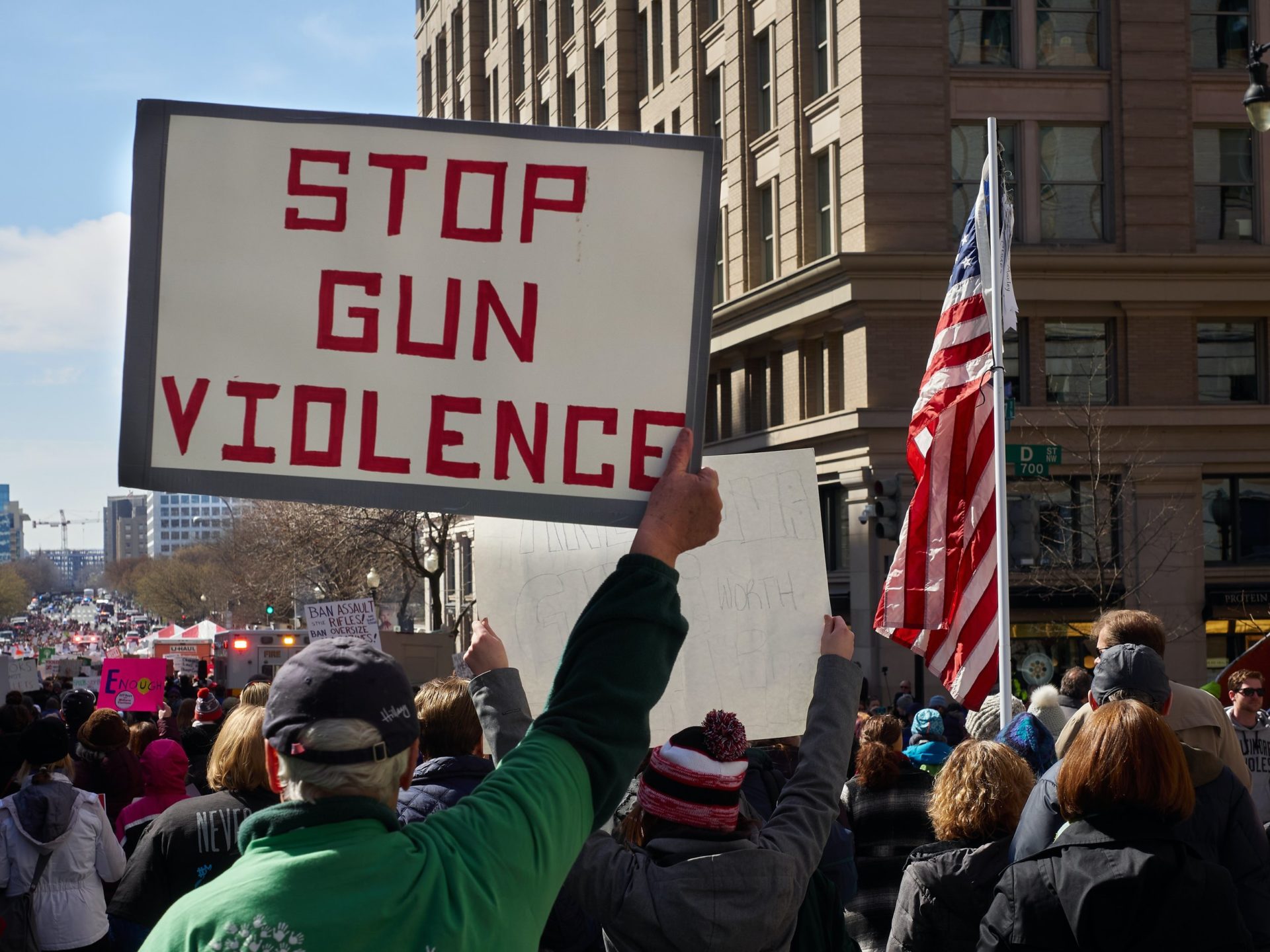
My fellow Americans, we are on our own. If the hundreds of mass shootings we have experienced have taught us anything, it’s that the federal government is paralyzed and simply will not act. If they didn’t act with Columbine in 1999 or in 2012 when a monster killed twenty children at Sandy Hook, then there is zero reason to think that the execution of nineteen children ages ten and under will move the needle at all. Whatever the reasons for this paralysis at the top level of the U.S. government, it’s clear that when the next mass shooting happens we will all be in the same boat.
Yes, there have been plenty of items that at least deserve a debate in terms of helping to curb this epidemic of angry and heavily armed assailants that plague our society. Gun control, mental background checks, restrictions, and more, have been brought up and rallied for and then gone nowhere. The United States has a long history of firearm ownership and that is not going to change. That is the reality of the situation, plain and simple.
As such, actionable policies to curb this violence aren’t being put into place. It’s simply up to us. This is where technology comes into play which can help these horrid situations. So, let’s examine how we can combat this when our federal government simply won’t.
Artificial Intelligence Can Be Leveraged In A Multitude Of Ways
Artificial Intelligence (or AI) is all around us. Social media platforms use it to determine how best to advertise to you. Facial recognition systems use it to interpret your face when you’re in front of it. AI has many applications and firearm safety is one of the urgent items that need addressing.
Currently, there is a company called Evolv Technology that is leveraging machine learning AI in camera systems to determine if a person is carrying a firearm. This technology is already available and has been put to use by a multitude of venues including NFL teams, the Lincoln Center, and even a large school district in Charlotte, North Carolina.
Alas, AI-based recognition technologies are not without their issues. There are valid concerns of racial and gender bias in programming, along with privacy concerns and more. It is also possible that a person not carrying a weapon could be flagged by systems like this; however, one could argue that the safety of many is worth inconveniencing a select few.
Imagine a shooter being accurately identified as armed and heading into a school from the parking lot. If that system was attached to smart locks throughout the building, a school could instantly lock itself down and alert authorities of a possible attack. While this wouldn’t help any victims outside of the building in the parking lot or playgrounds, the building would be secure, thus mitigating the possible loss of life.
Aside from this, artificial intelligence could be trained by social media platforms to quickly recognize and flag suspected shooters as well. The shooter in Christchurch, New Zealand live-streamed his horrific rampage on Facebook. The more recent shooter in Buffalo, New York live-streamed his killing spree on Twitch and millions have now seen this video, including myself as we research extremism at my company. Even though only 22 people saw the live video from Buffalo, and it was removed from Twitch within two minutes, the internet has a life of its own and the horrific footage of the massacre spread like wildfire. The latest mass shooter in Uvalde posted on Facebook that he was going to attack a school shortly before massacring children and teachers.
Social media platforms have hundreds of millions – if not billions – of users. The only way to possibly identify and catch shooters before they act is with the use of artificial intelligence. Already, the mental health field is applying AI to help improve offerings and care for its patients. There is no reason why tech giants like Facebook couldn’t start applying these techniques to their algorithms to identify shooters, or potential shooters, before they strike.
Privacy issues are already rampant on social media as the general population has already been psychoanalyzed by third parties with access to your Facebook posts and data. However, Facebook and the other platforms are businesses, not government entities, so they can get away with this kind of analysis on their platforms (providing they’re fully transparent about it in their Terms of Services documentation) just as users can choose not to use them.
However, it is worth noting that more fringe websites and smaller social media platforms that attract extremists will still continue to be an issue here. These types of terrorists want the largest audience possible to witness their “point,” so they tend to stream on the largest platform that they’re at least remotely affiliated with.
Firearm Safety Technology Could Also Be Key To Better Security
One of the biggest issues with firearms in the United States is theft. The mass shooter in Sacramento in April of 2022 used a stolen firearm that he converted from semi-automatic to fully automatic which enabled him to rapidly fire at least one hundred rounds, killing six people and injuring an additional twelve. Imagine if that stolen gun wouldn’t fire for anyone except the registered owner. This story, and those deaths, would have literally not happened.
While they are not widely in use, biometric gun locks exist. Firearm owners can put their guns under lock and key, but what happens when firearms are left unlocked? Sandy Hook answered that question as the shooter, after killing his mother, was able to simply steal her more powerful weapons and use them in the worst way imaginable. Locks are great but what about integrating the security directly into the weapon so they cannot be separated? The technology has existed for about two decades, yet these “Smart Guns” still haven’t been widely adopted yet.
Traditionally, Smart Guns have pioneered the use of two different systems. First is fingerprinting the trigger of the firearm to the owner. In that scenario, the weapon cannot be fired until it reads the owner’s fingerprint and unlocks, which takes just under half a second. The second way is through radio frequency identification or RFID. The weapon is paired to an RFID sensor, such as a smart watch, so the gun can only be fired if it’s within inches of the sensor.
While hacking fingerprints and RFID sensors is possible, the general population does not have these technological skills and therefore a stolen firearm with this integrated technology could not be used by anyone except the owner. While this would not have stopped the Uvalde shooter as he purchased his own AR-15 rifles legally at age eighteen, this would drastically cut back gun violence overall and perhaps even prevent another mass shooting.
Emotions run high over this particular topic. No rational person on either side of this debate, though, wants to see more mass shootings. While it would seem like a good idea to balance our Second Amendment rights with an attempt to mitigate mass shootings, it just doesn’t seem like that will come to fruition with new national laws. Having a federal law state that all new firearm purchases must have a Smart Gun trigger, as well as requiring all firearms to be retrofitted in this manner, seems like common ground in that it doesn’t infringe on Second Amendment rights but also has the net benefit of cutting down on illegal use.
Unfortunately, we simply cannot expect that law to ever pass, assuming it would even be proposed to begin with. We really are on our own here. Good luck to us all.

Nick Espinosa
Nick is the founder and CEO of Security Fantatics, the Cybersecurity/Cyberwarfare division of BSSi2 dedicated to designing custom Cyberdefense strategies for medium to enterprise corporations. As a member of the Board of Advisors for Roosevelt University’s College of Arts and Sciences as well as their Center for Cyber and Information Security, the Official Spokesperson for the COVID-19 Cyber Threat Coalition and a board member of Bits N’ Bytes Cybersecurity Education as well as Strategic Cybersecurity Advisor for the Private Directors Association, Nick helped to create an NSA certified curriculum that will help the Cybersecurity/Cyberwarfare community to keep defending our government, people and corporations from Cyber threats globally. In 2017 Nick was accepted into the Forbes Technology Council, an invitation-only community for world-class CIOs, CTOs and technology executives, and is a regular contributor of articles which are published on forbes.com as well as smerconish.com.






